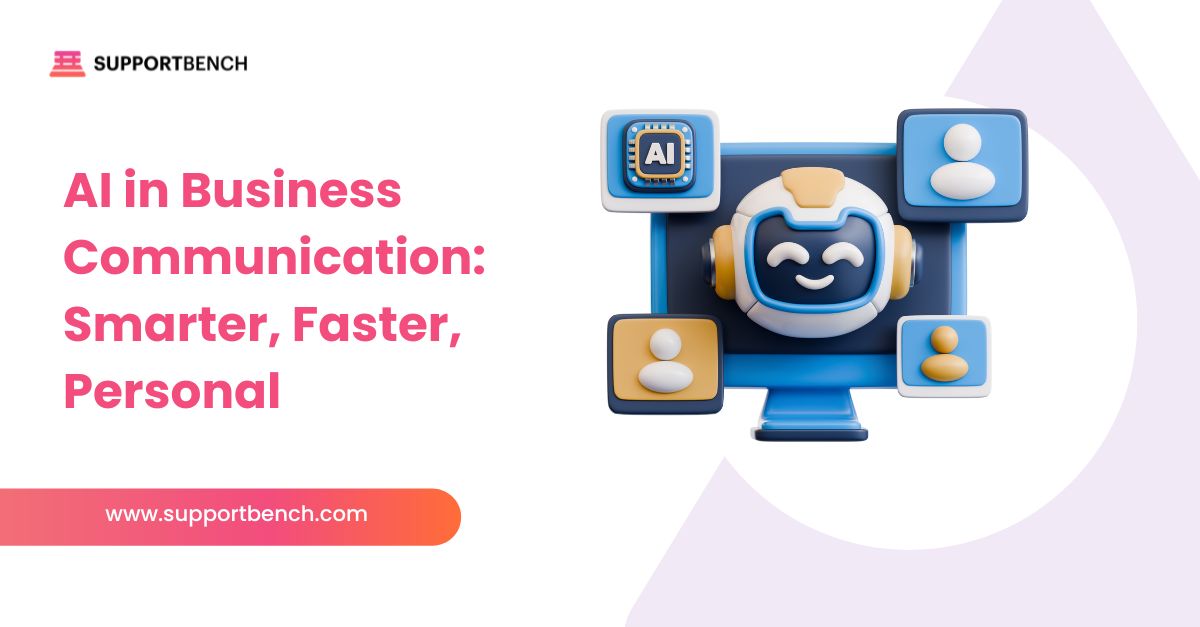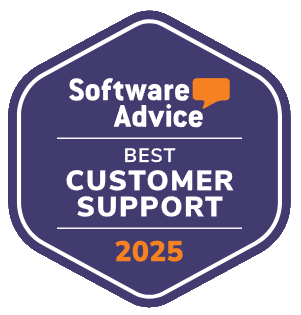One of the quickest ways to identify operational stress points is to observe how your team handles issues they can’t immediately resolve. Does a clear path exist? Or does it descend into a flurry of shoulder taps, frantic Slack messages, and anxious customers left wondering if their critical problem has vanished into a black hole? For many organizations, particularly those outgrowing their initial support structures, “escalation” can be a chaotic, ill-defined process that breeds frustration for customers and agents alike. This is a critical area to address, as outlined in The Ultimate Customer Support Playbook for New Managers, because a haphazard approach to escalations directly undermines your team’s ability to deliver exceptional B2B service.
The good news is that you can bring order to this chaos. By implementing a formal escalation management system, you provide your team with clear guidelines, empower them to act decisively, ensure critical issues get the right attention from the right people, and ultimately, enhance customer satisfaction and trust. This isn’t just about fixing problems; it’s about building a resilient support operation that can handle complexity with grace and efficiency.
This guide will walk you step-by-step through setting up an escalation management system that transforms ambiguity into clarity, empowering your team and reassuring your valuable B2B customers.

At a Glance:
- Clarity Ends Chaos: A well-defined escalation management system transforms chaotic, ad-hoc issue handling into a structured, efficient process, crucial for B2B customer support success and a key focus for new support leaders.
- Define Tiers, Triggers, and Workflows: The foundation of effective escalation management lies in clearly outlining support tiers, specific criteria (triggers) for when an issue should be escalated, and the precise steps (workflows) and communication protocols involved.
- Your Helpdesk is Your Ally: Leverage your customer support software to automate, track, and provide visibility into escalations. B2B-focused platforms like Supportbench offer built-in escalation management features designed to streamline this entire process.
- Train, Document, and Iterate: Successfully implementing an escalation system requires comprehensive team training, easily accessible documentation, and a commitment to continuously monitoring performance and refining the system based on data and feedback.
- Reduce Agent Stress & Improve Customer Trust: A clear escalation path empowers agents, reduces their stress by removing guesswork, and builds customer trust by ensuring critical issues receive appropriate and timely attention, ultimately protecting revenue and relationships.
Why a Formal Escalation Management System is Crucial (Especially in B2B)
Before diving into the “how,” let’s reinforce why this is non-negotiable for a high-performing support team, particularly in the B2B sector:
- Prevents Customer Frustration and Churn: Nothing erodes B2B customer confidence faster than a critical issue languishing unresolved or being bounced around without clear ownership. A formal system ensures a path forward.
- Ensures Critical Issues Get Timely Attention: For B2B clients, unresolved issues can mean significant business disruption and financial loss. A proper escalation path prioritizes these high-impact problems.
- Reduces Agent Stress and Guesswork: When agents know when and how to escalate, and to whom, it removes a huge burden of uncertainty and anxiety. They can focus on what they can solve and confidently pass on what they can’t.
- Improves Resolution Times for Complex Problems: Escalations ensure that issues requiring specialized knowledge or higher authority move efficiently to those equipped to handle them, speeding up overall resolution.
- Provides Accountability and Tracking: A defined system allows you to track where an issue is, who owns it, and how long it’s taking, ensuring accountability at every stage.
- Meets B2B SLA Commitments: Many B2B contracts include Service Level Agreements (SLAs) that stipulate resolution times for different severity levels. An escalation system is vital for meeting these obligations.
- Identifies Knowledge Gaps & Process Flaws: Analyzing escalation patterns can highlight areas where frontline agents need more training or where processes need refinement.
Without a system, you’re relying on individual heroics, which isn’t scalable or sustainable.
Step 1: Define Your Escalation Tiers & Responsibilities
The first step is to establish clear levels or tiers within your support structure to which issues can be escalated.
Common Tier Structures:
- Tier 1 (L1) / Frontline Support: Handles initial customer contact, common issues, basic troubleshooting, and information requests. Aim for high FCR at this level for routine queries.
- Tier 2 (L2) / Technical Support / Subject Matter Experts (SMEs): Handles more complex technical issues, in-depth troubleshooting, problems requiring specialized product knowledge, or issues L1 couldn’t resolve within a defined timeframe.
- Tier 3 (L3) / Senior Technical Support / Engineering Liaison / Development: Handles the most complex problems, bugs requiring code-level investigation or fixes, issues requiring deep system access, or architectural problems.
- Management Escalation: For issues related to severe customer dissatisfaction, policy exceptions, resource conflicts, or situations where other tiers are blocked.
Clearly Define Scope for Each Tier: For each tier, document:
- Types of issues they are responsible for.
- Specific skills and knowledge required.
- Tools and access levels they possess.
- Expected resolution capabilities.
Identify Individuals or Teams: Assign specific individuals, teams, or roles to each tier. Ensure there’s adequate coverage, especially for critical B2B support.
Document Responsibilities: Make sure everyone understands their role within the escalation hierarchy and what’s expected of them when an issue reaches their tier.
Step 2: Establish Clear Escalation Triggers & Criteria
An issue shouldn’t be escalated randomly. You need objective, clearly defined triggers that tell an agent when it’s appropriate and necessary to move an issue to the next tier.
Time-Based Triggers:
- Issue unresolved by Tier 1 within [X] hours/days.
- Customer hasn’t received a meaningful update within [Y] hours.
- Ticket has been in a specific status (e.g., “Pending L2 Investigation”) for too long.
Severity/Impact-Based Triggers (Critical for B2B):
- Critical system outage or widespread service disruption.
- Issue affecting multiple users at a key B2B client.
- Problem directly impacting a client’s ability to conduct core business operations.
- Significant data loss or security concern.
Skill/Knowledge-Based Triggers:
- The current agent/tier has exhausted their knowledge and troubleshooting steps.
- The issue requires expertise or tools not available at the current tier.
Customer Request-Based Triggers:
- While not all requests for escalation are valid, provide guidelines for when an agent should honor a direct customer request (e.g., after attempting reasonable resolution steps at their current tier, or if the customer expresses extreme dissatisfaction).
SLA Breach Triggers:
- If an issue is approaching or has breached a contractually defined SLA for response or resolution time.
Process-Based Triggers:
- Issue requires a policy exception or a decision outside the current agent’s authority.
Document Triggers Thoroughly: These triggers must be clearly documented and easily accessible to all support agents. They should be unambiguous.

Step 3: Design Your Escalation Workflow & Communication Protocols
Once a trigger is met, what happens next? Define the step-by-step process.
The “How” of Escalation:
- How does an agent physically initiate an escalation in your helpdesk? (e.g., changing a ticket status, assigning to a specific queue/agent, using a dedicated “escalate” button).
- What is the notification mechanism for the next tier? (e.g., automated helpdesk notification, direct message in a chat tool, email).
Information Handoff (Crucial for Efficiency):
- Define the minimum essential information that must be included when escalating a ticket. This prevents the next tier from having to re-ask basic questions. Create an “escalation handoff template.”
- Key Handoff Info:
- Clear summary of the original issue and customer impact.
- Detailed steps already taken by the previous tier(s) to troubleshoot.
- Results of those steps (what worked, what didn’t).
- All relevant customer information (contact details, account ID, environment details for B2B).
- Any error messages, logs, or screenshots.
- The specific reason for escalation.
Ownership & Accountability:
- Clearly define who “owns” the ticket and is responsible for its resolution once it’s escalated to a new tier.
- How is ownership formally transferred and acknowledged?
Internal Communication Protocols:
- How do different tiers communicate updates or requests for more information among themselves regarding an escalated ticket? (e.g., internal notes in the helpdesk, dedicated chat channels for L2/L3).
Customer Communication Protocols During Escalation:
- Who is responsible for communicating with the customer once an issue is escalated? (Usually the new owner, but this needs to be defined).
- How frequently should customers be updated on escalated issues? (Even if it’s just to say “we’re still working on it,” regular updates are vital).
- What information should be shared with the customer (and what shouldn’t)?
- Manage customer expectations about resolution times for complex, escalated issues.
De-escalation Process:
- What happens if an issue is resolved by a lower tier after being escalated (e.g., L1 finds a solution while L2 is investigating)?
- How is an issue “de-escalated” if its severity decreases or it’s found to be a simpler problem than initially thought? Define the process for returning ownership.
Step 4: Leverage Your Helpdesk for Escalation Management
Your customer support software should be the backbone of your escalation management system. If it’s not, you might need to re-evaluate your tools (see “Choosing the Right Customer Support Software for Your Growing B2B Team“).
Automated Escalation Rules:
Can your helpdesk automatically escalate tickets based on your defined triggers (e.g., time elapsed in a certain status, specific keywords, priority level, SLA timers)? Automation reduces manual effort and ensures consistency.
Clear Visibility of Escalated Tickets:
- Does your helpdesk allow you to easily identify and track escalated tickets? (e.g., through dedicated queues, custom views, visual tags, dashboards).
- Can managers quickly see all currently escalated issues and their status?
Tracking & Reporting Capabilities:
Can you report on key escalation metrics like escalation rates, time spent at each tier, resolution times for escalated tickets, and common reasons for escalation? This data is vital for system refinement.
Collaboration Features:
Does the helpdesk facilitate easy internal collaboration and note-sharing on escalated tickets?
Supportbench Angle – Built for B2B Escalation Clarity:
“This is where a robust B2B helpdesk like Supportbench becomes indispensable. Its escalation management features are designed to bring order and efficiency to this critical process. You can:
- Build multi-level escalation paths directly into the system, defining the sequence of tiers.
- Define rules for when escalations occur based on your specific criteria (time in status, priority, severity, custom fields unique to B2B clients, or even impending SLA breaches).
- Add internal notes and track all communications seamlessly, ensuring comprehensive context is transferred with each escalation.
- Track the status of escalations clearly, including functionalities for de-escalating cases when appropriate.
- Monitor escalation performance within scorecards and customizable dashboards, giving you full visibility into how the system is working.
This systematic approach, built natively into Supportbench, takes the guesswork out for agents and ensures critical B2B issues receive the right attention from the right experts, promptly.”
Step 5: Train Your Team & Document Everything Meticulously
A perfectly designed system is useless if your team doesn’t understand it or can’t easily access the information.
Comprehensive Training Sessions:
- Conduct dedicated training for all support staff (and any other stakeholders involved in escalations) on the new escalation policy and procedures.
- Cover tiers, responsibilities, triggers, workflows, communication protocols, and how to use the helpdesk features for escalation.
Easy-to-Access Documentation:
- Create a clear, concise Escalation Policy document.
- Store this document (and any related job aids or checklists) in your internal knowledge base where it’s readily accessible to everyone.
- Include flowcharts or visual diagrams of the escalation paths if helpful.
Role-Playing & Scenario-Based Training:
- Use practical examples and role-playing exercises during training to help agents understand how to apply the process in real-world situations.
Ongoing Refreshers: Periodically review the escalation process in team meetings and provide refresher training as needed, especially for new hires.
Step 6: Monitor, Review, and Iterate for Continuous Improvement
Your escalation management system is not a “set it and forget it” initiative. It requires ongoing attention and refinement.
Track Key Escalation Metrics:
- Escalation Rate: Overall percentage of tickets escalated. Also, track by agent/team (to identify coaching opportunities) and by issue type (to pinpoint product or knowledge gaps).
- Time Spent at Each Escalation Tier: Are issues lingering too long at a particular level?
- Average Resolution Time for Escalated Tickets: Is it improving?
- CSAT for Escalated Tickets: How satisfied are customers whose issues were escalated? This is a critical indicator of system effectiveness.
- Common Reasons for Escalation: Analyzing why tickets are escalated can reveal needs for better L1 training, improved documentation, or product fixes.
- SLA Performance on Escalated Tickets: Are you meeting your contractual obligations?
Regular Review Meetings:
- Schedule periodic meetings (e.g., monthly or quarterly) with relevant stakeholders (team leads, representatives from different tiers, management) to review escalation metrics and discuss the system’s effectiveness.
Gather Feedback:
- Actively solicit feedback from your support team on how the escalation process is working. Are there pain points? Are the triggers appropriate?
- If appropriate, consider gathering feedback from B2B clients who have experienced the escalation process.
Be Prepared to Iterate and Refine:
- Based on your data and feedback, don’t be afraid to make adjustments to your tiers, triggers, workflows, or documentation. Continuous improvement is the goal.

The Role of Management in Escalations
As a Head of Support, you also play a critical role:
- Being an Effective Escalation Point Yourself: When issues are escalated to management, handle them promptly, professionally, and decisively.
- Championing the Process: Ensure the team understands the importance of the escalation system and adheres to it.
- Removing Roadblocks: If escalated issues are getting stuck due to inter-departmental issues or resource constraints, it’s your job to help clear those paths.
- Supporting Your Team: Back your agents when they follow the defined escalation procedures correctly.
From Reactive Firefighting to Proactive Problem Solving
Setting up a formal escalation management system is a foundational step in transforming your customer support operation from a reactive, chaotic environment to a proactive, efficient, and customer-centric powerhouse. It takes effort to define, document, train, and iterate, but the benefits – reduced agent stress, improved resolution times for complex issues, greater accountability, and ultimately, increased B2B customer trust and loyalty – are immense.
By establishing clear tiers, triggers, workflows, and communication protocols, and by leveraging the capabilities of a modern B2B helpdesk like Supportbench, you empower your team to navigate complexity with confidence. You take the guesswork out of handling tough situations and ensure that every customer, especially your high-value B2B clients, knows their critical issues will be handled with the urgency and expertise they deserve. This clarity is not just an operational improvement; it’s a cornerstone of exceptional B2B customer support and a key achievement for any new support leader.















